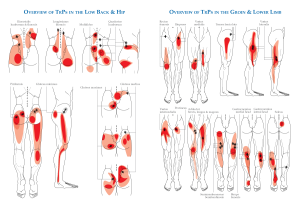5 Signs Your Herniated Disc Is Healing

Our spines are made of bones called vertebrae cushioned by small, spongy discs. These spinal discs have a two-layer structure that consists of an external shell and an internal gel-like filling. They serve as shock absorbers for the spine, allowing it to bend, twist, and flex without damage. In this article, you will read about 5 signs your herniated disc is healing.
A herniated disc, commonly called a slipped or ruptured disc, arises when the soft, gel-like center inside a spinal disc pushes through the outer shell, compressing nearby nerves. This pressure leads to inflammation, pain, and numbness — the primary symptoms of a herniated disc.
Where a herniated disc is located often dictates how the body is affected by symptoms. For example, a herniated disc in the neck can cause pain extending down to the shoulder and arm. A lower back herniation may irritate the sciatic nerve, shooting pain through the buttock and the leg.
Factors Affecting Healing Time
In most cases, disc pain typically resolves within six months, allowing individuals to regain normal function with time. Factors that can affect healing time include:
- The severity of the injury. The extent to which the disc has herniated significantly affects healing time. Generally, a more severe herniation requires a longer recovery than a less severe case.
- Age. Younger individuals typically recover faster from injuries, including herniated discs, due to the body’s more robust healing capabilities.
- Overall health. Individuals in good health often recover faster from herniated discs than those with other health conditions.
Recovery From a Herniated Disc
Symptoms usually change in a specific sequence as healing occurs. Identifying the signs of recovery will help you understand your progress and equip you to better plan the next steps in the healing process.
1. Nerve pain is lessening
Radiculopathy is a term that describes a variety of symptoms that occur when a nerve root in the spinal column is compressed, irritated, or inflamed. In the case of a herniated disc, radiculopathy often presents as sharp, shooting pains down the path of the nerve affected by the herniation, commonly down an arm or a leg. As the herniated disc begins to heal, these intense shooting pains should lessen in frequency and intensity.
2. Local pain is lessening
If disc herniation was caused by trauma, pain from a muscle strain, sprain, or soft tissue injury can also accompany the disc herniation. Local pain will begin to resolve as inflammation lessens and muscle pain decreases.
3. Improvement in muscle weakness
A herniated disc can cause weakness along the path of the affected nerve due to the nerve’s inability to function correctly. This can affect movement in your legs or arms depending on the location of the herniated disc. As the healing process continues, you should notice improved muscle strength and increased mobility, indicating that the affected nerves are recovering.
4. Numbness improves
Numbness in the affected area results from your nerves being compressed by the herniated disc. If you have a herniated disc, you may experience a tingling or pins and needles sensation in the body part impacted by the affected nerve. If a nerve has been irritated for a long time, it may take longer for complete healing to happen.
5. Imaging tests show a change
Imaging tests like X-rays or an MRI can further confirm the healing process. These tests may show a decrease in the size of the herniation or changes in the position of the disc material.
When Should I See a Doctor?
The healing process of a herniated disc is often gradual and varies between individuals. While there’s no definitive answer to the healing duration for a herniated disc due to the variables involved, a proactive recovery approach can help shorten the healing process. Staying active, maintaining a healthy weight, and understanding the specifics of your condition are vital elements of an effective recovery plan.
However, if symptoms persist or worsen, you should seek medical attention immediately to reassess the situation and adjust the treatment plan as necessary.
Take the Next Steps to Fix Your Back Pain
today to learn about the healing process for herniated discs and find the right treatment option for you.




